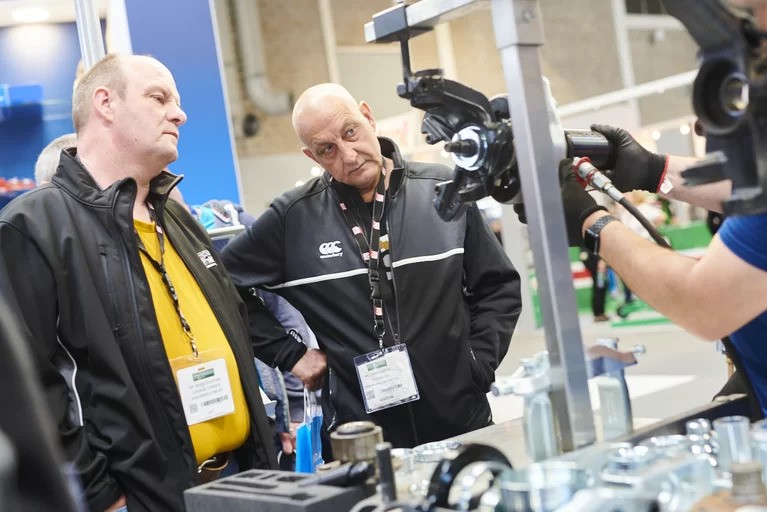The technical team at Cambiare has identified a number of issues concerning the electrical system and engine management systems of the Peugeot 308 (07>).
Coil Failure or Split Breather Hose
Misfires are often diagnosed as coil failures, when in fact the real cause of the misfire is a split breather hose. The best way to establish if a leaking breather hose is the cause is to perform a smoke test. This is simple to do if you have the right equipment and if there is a leak in the system a smoke test will uncover a leak it in a matter of minutes.
There are two ways to run the test depending on the type smoke tester being used. Some testers require you to disconnect the breather hose from PVC valve and pump smoke into the hose. The other method is to blow smoke into the intake of the air filter housing – this will test the whole system not just the hose. Whichever method you use, a smoke test will expose even the smallest of leaks – not only those that are causing a problem now, but even very small leaks that have yet to cause any symptoms.
Many garages do not have the facility to carry out a smoke test, so other methods are required. Simply looking at the condition of the hoses and feeling for areas that have become soft through oil contamination and either spilt, collapsed or swollen and blocked is a good way of checking.
If you do find that the condition of the hose is worse for wear it should be replaced before you check again for misfires.
Faulty Lambda sensor or ECU software failure?
MOT garages are reporting that the Peugeot 308 has a high failure rate on the emissions part of the annual test. Emissions problems naturally lead garages to assume that the Lambda sensor (also called oxygen sensor) is at fault.
On first glance this seems to be a reasonable assumption – the sensor monitors the air-to-fuel ratio by measuring the amount of unburned oxygen in the exhaust gas. This information is sent as a voltage signal back to the ECU which varies the fuel injector output according to the data received from the sensor.
So a faulty Lambda sensor could cause the vehicle to fail the emissions test. However, there are over 650 generic fault codes associated with the vehicle powertrain and although they can point you to a specific sensor, the sensor is only one small part of a bigger system. Modern day diagnostics is much more than simply reading a fault code from a scan tool; it is an involved process that requires the mechanic to identify a faulty part and understand why it has failed. The big pitfall for the mechanic is assuming that the component identified in the fault code is the faulty product, when in fact it is another component within the system, a poor connection or broken wire.
One MOT centre that we know of found one of their vehicles failing the emission test even though the Lambda sensor and the catalytic convertor were in top shape. Unable to diagnose the cause of the problem, the garage was so stumped that they approached their local Peugeot dealer only to discovered that an ECU software upgrade was required.
With this in mind, it is always advisable to perform a thorough check of the whole system before replacing any part or parts. And remember: an MOT emissions failure on a Peugeot 308 (07>) could be down to an issue with the ECU software. If in doubt, consult an authorised dealer.
Do you know your camshaft sensor from your crankshaft sensor?
According to analysis by Cambiare, failure rates of camshaft and crankshaft sensors on the Peugeot 308 (08>) are rather high. So do you know the difference between a crank angle sensor and a primary engine position sensor?
The answer to the question above is – they are generally the same. In fact, due to the multi-functionality and the variety of locations for this sensor, it has many function related names which are used interchangeably. Here is a brief glossary of terms:
| Sensor Name | Location |
| Crank Sensor | Crank |
| Cam Sensor | Cam |
| Primary Engine Position Sensor | Crank |
| RPM Sensor | Crank |
| Cam/Crank Angle Sensor | Cam/Crank |
| Flywheel Sensor | Crank/Flywheel |
| Engine Speed Sensor | Crank |
The components listed above are actually derivatives of the same family of sensors, which measure the position and speed of engine components as part of the electronic fuel injection/ignition system. Yet, different component, vehicle and diagnostic equipment manufacturers use different terminology to explain the function and also the position of the sensor.
Since the introduction of electronic fuel injection/ignition, sensors have been used to monitor and communicate the engine position to the engine control unit (ECU). Using these measurements, the ECU can trigger or retard fuel injection and ignition relative to the engine’s operating conditions.
In the early days the ignition timing and the injection system were controlled by a cam sensor and the distributor. Now, engines that use direct fuel injection and coil packs or coil rails use a crank sensor, which relays the engine position to the ECU. This tells the injection system to inject fuel into the relevant cylinder. The sensor output can also be used to determine the current combustion cycle, which is very important when the engine is started, especially with stop-start systems.
The crank sensor can be used in combination with a camshaft position sensor to monitor the relationship between the pistons and valves in the engine, which is particularly important in engines with variable valve timing. The same sensor can be found in multiple locations on the engine, including the crank pulley, flywheel and camshaft.
The likely causes of crankshaft position sensor failure are: exposure to extreme heat, oil or dirt ingress from a failing seal, dust particles from the clutch, or wear over a long period of time. These factors cause the sensor to become burnt or worn.
When the sensor fails, it stops transmitting the signal which contains the vital data for the ignition and other parts in the system. This can cause faults such as the engine idling erratically, starting failure, poor starting or flat acceleration. If the engine is revved up when it has a bad or faulty sensor, it may cause misfiring, excessive engine vibration or backfiring.
Help is at hand
To assist motor mechanics, Cambiare (in partnership with Pierburg) has developed a technical brochure which examines individual components and systems in detail. To request a copy, simply email enquiries@cambiare-ve.com.










Hi Tom, this is an easy fix and common on most modern Peugeots. Fill up with quality diesel or petrol like BP V Power and don’t let the tank fall below quarter full. The fault will disappear. Give it a go you will be amazed.
Hello,my depollution system keeps coming up,and then goes into limp mode,ive done the motorway run,still doesnt clear it,have you any suggestions plse,
Tom
I have a 308 1.6hdi